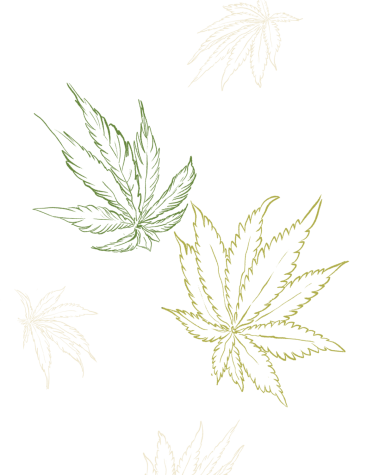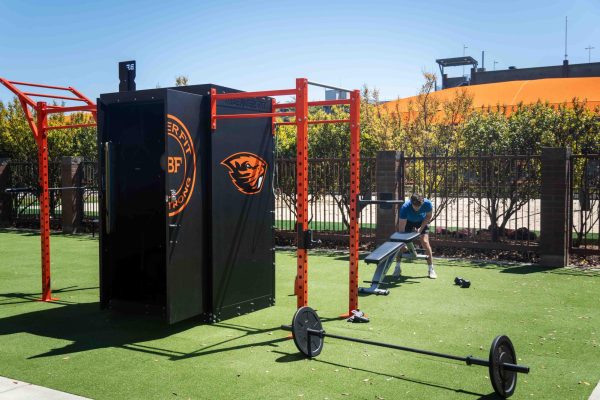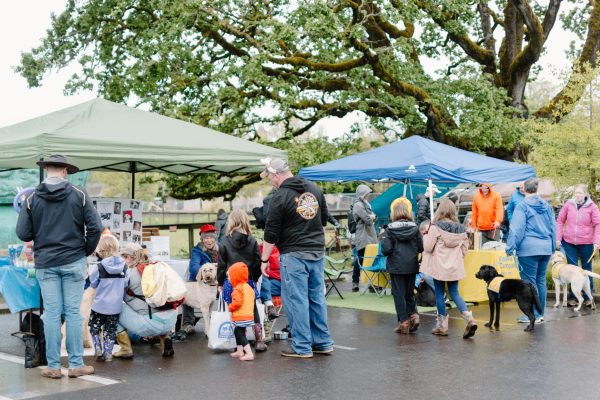Strains of cannabis go beyond just sativa and indica

Since Oregon legalized the recreational use of cannabis in 2015, the use of cannabis and its different strains has evolved far beyond what it was seven years ago.
The different strains of cannabis are typically looked at in three separate classifications: sativa, indica and hybrids. But what does this really mean?
“There are endless amounts of strains. Cannabis is broken down into indicas and sativas and there are hybrids of each one and then hybrids upon hybrids,” said Adam Israel, manager of Corvallis’ Green Room Dispensary and unofficial cannabis expert.
However, there are endless possibilities to choose from within these three options.
“To create a strain, cultivators select a variety of traits to produce the effects they want,” stated a 2020 article in Medical News Today. “People often describe cannabis strains as being indica, sativa or hybrid. Hybrids are strains that combine both indica and sativa.”
“Ever since cannabis exploded in Oregon, many places are creating their own genetics,” Israel said. “They take two to four different strains and cross them together by combining them horticulturally and then grow a whole new strain that hasn’t been done before.”
Jane Ishmael, associate professor at Oregon State University’s College of Pharmacy, said crossbreeding results in many strains of cannabis.
“People can experiment with whatever strains they want,” Israel said. “Cannabis strains are made of terpenes. If you take terpenes out of cannabis, you don’t have indica or sativa strains anymore. THC and CBD are cannabinoids and those affect the high, with THC being the only psychoactive portion. THC gets you high, and terpenes help get you to the “stativa/indica effect.”
Israel also said terpenes create different flavors, smells and strain classifications. Botanical terpenes present in other flowers and fruit can be added to cannabis to give it non-artificial
flavoring, Israel said.
“There are very popular sativa strains that people recognize by name such as Jack Herer and Sour
Diesel as well as indica strains such as Obama Kush and Grand Daddy Purple,” Israel said. “To put it simply, sativa is more of an alert, awake, head high. While indica is more of a sleepy, relaxed, body high.”
For someone looking for a strain to take during the night, Israel said he would recommend
an indica, while if someone just wants one for the day, a sativa. But if someone wants a strain for all the time, Israel suggests a hybrid.
There are endless amounts of strains. Cannabis is broken down into indicas and sativas and there are hybrids of each one and then hybrids upon hybrids.
— Adam Israel, manager of Corvallis' Green Room Dispensary
However, there are several other reasons people visit the dispensary, he said.
“Let’s say someone comes in looking for pain relief. That is going to be more of the CBD side,” Israel said. “It is commonly used for anti-inflammatory and anti-anxiety purposes and also doesn’t give you the same high the THC does.”
Ishmael explained that CBD doesn’t come with the same psychoactive active properties, so people
who don’t want to feel those effects will seek something with lower THC.
“CBD, in my experience, gives you more of a clear-headed high,” Israel said. “You’re more aware of your surroundings. Lower THC levels can make people a little more functional. You don’t get those panicky attacks that some people get from too much sativa or those zoned-out effects that some people get from too much indica.”
When Israel recommends CBD, he said he usually recommends at least a small amount of THC in there because he supports the Entourage Effect theory. This is the idea that all compounds of the
cannabis plant work together to produce a psychoactive effect. CBD with no THC, for one, is commonly sold as an edible. However, edibles can have very different effects compared to other methods.
“Anything that you ingest by mouth has a lower activation time,” Ishmael said. “Edibles take longer to get the desired effects so it’s important to understand activation time.”
Besides edibles, smoking extracted cannabis has become a very popular method of marijuana use.
According to Oregon Health Authority, activation time is the amount of time it will likely take for an individual to begin to feel the effects of ingesting or inhaling a cannabis product. Activation times can sometimes be found on packaging labels or researched beforehand.
“The high is usually stronger because the oil is made of everything in cannabis that gets you high, extracted directly from the plant material, but it’s also slightly different,” Israel said. Because of this, Israel warned that it can be strong and suggested people ingest carefully.
“Everyone has a different tolerance to cannabis so sometimes concentrate isn’t for everyone,” Israel said.















